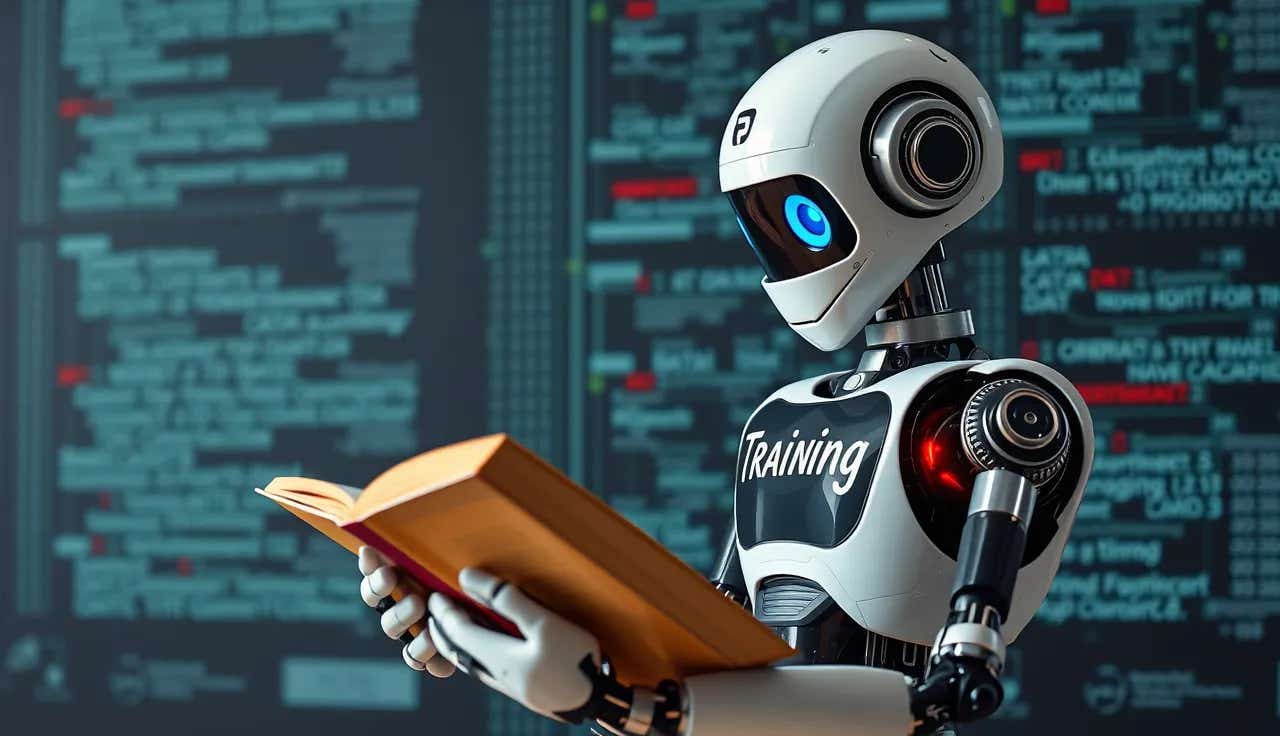When light waves collide something incredible happens, study finds
Ordinarily, light waves pass through each other without any trouble. But when quantum mechanics is involved, something strange happens.

Tensor mesons, long underestimated, play a major role in light-by-light scattering that affects the muon’s magnetic moment. (CREDIT: AI Generated / The Brighter Side of News)
The magnetic moment of the muon—a tiny property of a tiny particle—has long puzzled physicists. Experiments and theory haven’t quite matched up, leaving open the thrilling possibility of discovering “new physics” beyond the Standard Model. Now, fresh insights into a subtle quantum effect could help close that gap, or at least tighten the constraints around it.
At the heart of this puzzle lies light-by-light scattering, a quantum process where particles of light, or photons, briefly transform into other particles. Ordinarily, light waves pass through each other without any trouble. But when quantum mechanics is involved, something strange happens: photons can interact through the creation of virtual particles that pop in and out of existence. These fleeting particles, though invisible, leave a measurable imprint on other particles.
One of those affected is the muon, a heavier cousin of the electron. How the muon “wobbles” in a magnetic field—its so-called anomalous magnetic moment—depends in part on these tiny interactions. The muon's magnetic behavior, often described using the formula aμ = (g–2)μ / 2, has been the subject of years of high-precision experiments and theory. Even the tiniest deviation between the theoretical prediction and experimental result can hint at unknown physics.
That’s why the upcoming results from the Fermilab experiment are so important. Scientists there are about to cut the experimental uncertainty in half, narrowing it from 22×10⁻¹¹ to roughly 11×10⁻¹¹. But with increased precision comes pressure. Theory must now meet that same level of detail, and one of the biggest obstacles is the hadronic light-by-light (HLbL) scattering contribution. It’s a notoriously tricky piece to calculate, involving strong nuclear forces and a tangle of particle interactions.
A role for underestimated particles
New work from a team at TU Wien in Vienna, led by theoretical physicist Jonas Mager, highlights a group of particles that might have been seriously underrated in earlier models: tensor mesons.
Mesons are composite particles made of a quark and an antiquark, and they come in several types. Tensor mesons are a particular class with a spin-2 configuration. These particles don’t last long and are never seen directly, but they influence other particles in subtle ways. Their importance shows up when photons scatter off each other—something that doesn’t happen in classical physics but becomes possible in the quantum world due to virtual particles.
Related Stories
- Researchers discover that laser light can cast a shadow
- Groundbreaking new camera can capture light waves at an incredible 1 trillion frames per second
- In a global first, scientists control electrons with twisted light
“Even though these virtual particles cannot be observed directly, they have a measurable effect on other particles,” says Mager. “If you want to calculate precisely how real particles behave, you have to take all conceivable virtual particles into account correctly. That's what makes this task so difficult—but also so interesting.”
When light scatters off light, a photon can briefly turn into a pair of particles, such as an electron and a positron. These interact and annihilate, turning back into a photon. But if heavier virtual particles like mesons appear in the process, the calculations become even more complicated.
Earlier models included tensor mesons, but they were treated with heavy simplifications. A recent study showed that not only is their contribution larger than previously thought—it may even carry the opposite sign, meaning it influences the final results in a completely different direction.
Closing the short-distance gap
In the language of quantum chromodynamics (QCD), short-distance constraints (SDCs) describe what happens when photons involved in scattering carry large virtual energies. One important condition, known as the Melnikov-Vainshtein (MV) constraint, has already been shown to be satisfied in a framework called holographic QCD (hQCD), thanks to contributions from an infinite series of axial vector mesons.
But that’s only part of the story. A different constraint, the symmetric longitudinal SDC, wasn’t fully matched. In fact, hQCD models showed it was met only about 81% of the way using axial vector mesons alone. This left a sizable chunk unexplained.
Here’s where tensor mesons come in. Unlike the axial types, the full tower of tensor mesons in holographic QCD contributes specifically to the symmetric constraint, not the MV one. When these are added in, the gap closes neatly.
This match also agrees well with experimental data from BELLE and aligns with recent dispersive analysis, which carefully examines real-world scattering data. It turns out that tensor mesons add a large positive boost to the muon’s magnetic moment from low-energy regions (below 1.5 GeV), with diminishing returns at higher energies.
A holographic trick
Describing the strong force at play inside mesons is no easy feat. Conventional calculations work best only in certain limits, often missing out on intermediate interactions. To sidestep this, the team at TU Wien turned to an unconventional but powerful technique called holographic QCD.
This method maps our usual four-dimensional physics into a five-dimensional gravitational model, where Einstein’s equations can be used more directly. It’s not science fiction—it’s a mathematical shortcut inspired by string theory, and it works remarkably well for some types of quantum problems.
“The tensor mesons can be mapped onto five-dimensional gravitons, for which Einstein's theory of gravity makes clear predictions,” says TU Wien’s Anton Rebhan. By shifting the problem into a space with more dimensions, some of the trickiest calculations become manageable. Once solved, the answers are converted back into normal four-dimensional space.
Using this method, the team could show that tensor mesons naturally fill in the missing pieces in the HLbL puzzle. The result? A theoretical prediction that fits much better with both experimental data and numerical simulations from lattice QCD—another complex tool that uses supercomputers to model quark interactions from first principles.
Toward new physics—or not?
All of this refinement matters because physicists are trying to detect new physics at the tiniest scales. The Standard Model describes most of what we know about the quantum world—but not all of it. Gravity, dark matter, and many open questions still sit outside its reach.
The magnetic moment of the muon offers a rare testing ground. Any deviation from the Standard Model’s prediction could hint at unknown forces or particles. The discrepancy has shrunk recently, largely thanks to improved lattice QCD results for hadronic vacuum polarization—the leading source of uncertainty. But HLbL scattering remains a stubborn second.
By digging into the underestimated role of tensor mesons and using advanced tools like hQCD, researchers are chipping away at this last major uncertainty. Their work doesn’t just sharpen the current theory—it also ensures that when experimental data from Fermilab arrives, physicists will be ready to interpret what it means. Whether it confirms the Standard Model or cracks it wide open, every piece of the puzzle counts.
Research findings are available online in the journal Physical Review Letters.
Note: The article above provided above by The Brighter Side of News.
Like these kind of feel good stories? Get The Brighter Side of News' newsletter.



